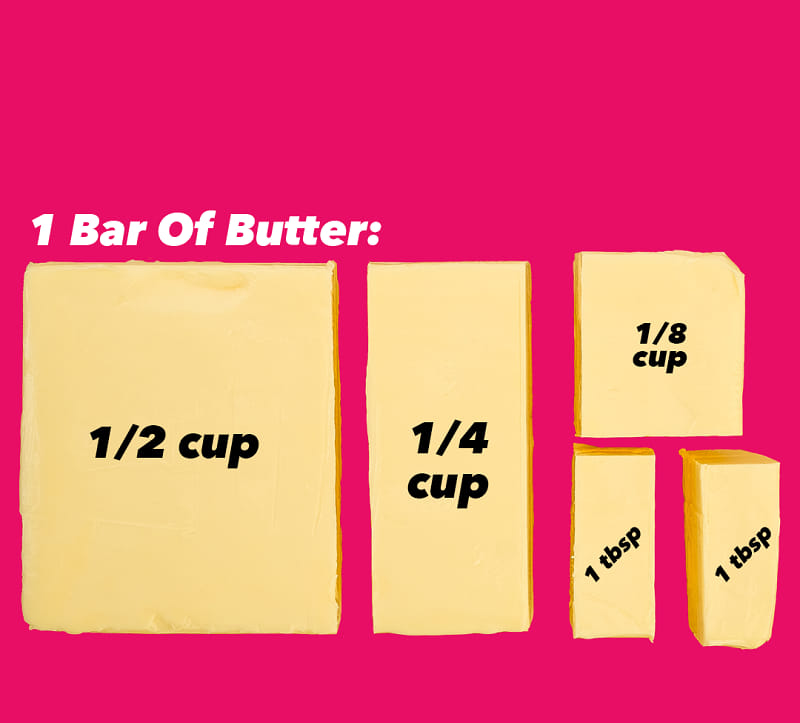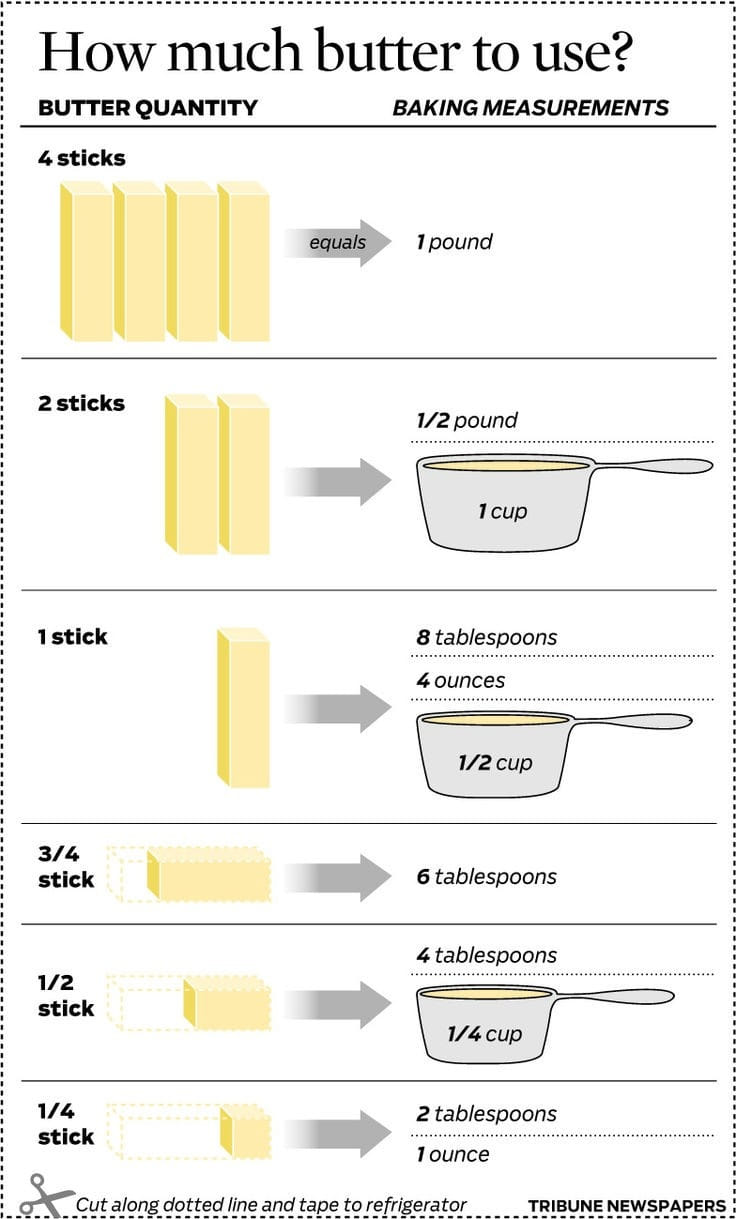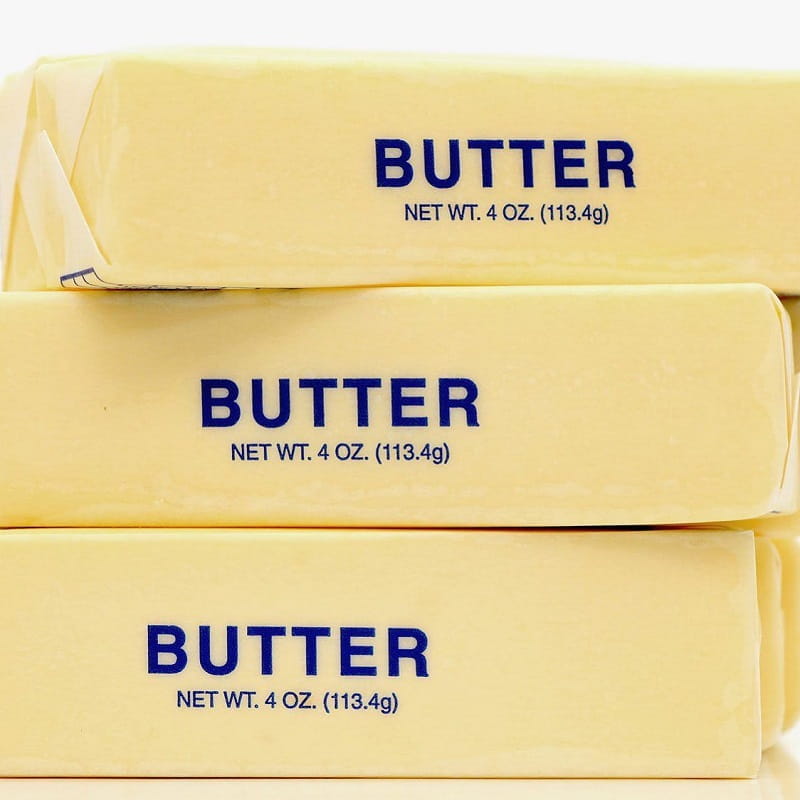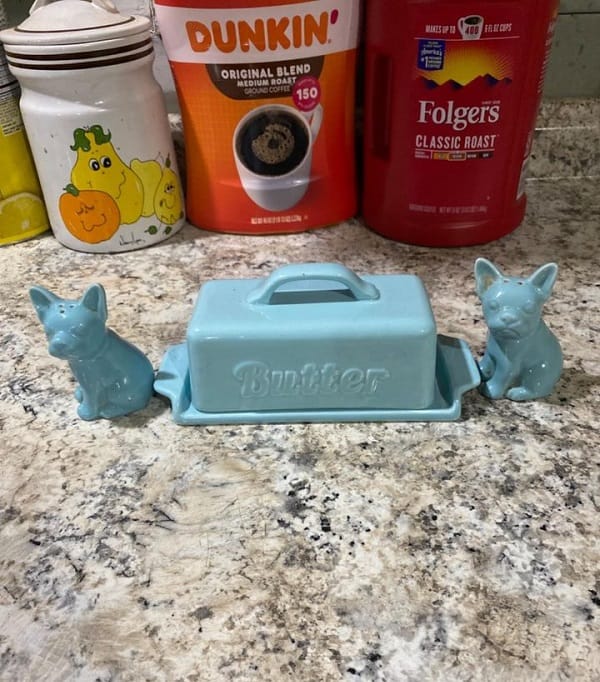If you’re baking or cooking and come across a recipe that calls for a cup of butter, you may wonder just how much that is. And if you’re trying to measure specific amounts of butter, like tablespoons, you may find it helpful to know exactly how many tablespoons in a cup of butter.
Knowing the correct measurements is crucial, especially if you want to achieve the perfect consistency and taste for your dishes. Butter has a special place in our hearts and our recipes. It adds flavor, richness, and depth to everything from baked goods to savory dishes. So, to make sure you get the right amount of this delicious ingredient for your recipe, it’s essential to know how many tablespoons are in a cup of butter.
In this article, we’ll answer this age-old question and provide all the information you need to measure butter in tablespoons accurately. So let’s get started!
What is a Cup?

When it comes to cooking and baking, precise measurements are vital for the success of any recipe. And one of the most commonly used units of measurement in the kitchen is the cup. But what exactly is a cup in measure, and how do you use it correctly? Firstly, it’s important to note that different types of cups are used in measuring ingredients. The most common ones are the standard and metric measuring cups.
The standard measuring cup is typically made of plastic or metal and is commonly used in the United States. It comes in different sizes, usually 1 cup, 1/2 cup, 1/3 cup, and 1/4 cup. Each cup is marked with lines indicating the measurement. For example, the 1-cup line is usually at the top of the cup, while the 1/2-cup line is halfway down.
On the other hand, the metric measuring cup is used in countries that follow the metric system, such as Canada, Australia, and Europe. It also comes in different sizes, usually 250ml, 200ml, 150ml, and 100ml. Each cup is marked with the volume in milliliters.
What is a Tablespoon?
Tablespoons are one of the most commonly used measurements in cooking and baking. If you’re someone who spends a lot of time in the kitchen, you’ve probably come across a recipe that calls for a tablespoon or two of an ingredient.
A tablespoon is a unit of measurement that is used to measure volume. In the United States, a tablespoon equals three teaspoons or 1/16 of a cup. However, in other countries, the tablespoon can vary in size. For example, in the United Kingdom, a tablespoon equals 17.76 milliliters or about 0.95 US tablespoons.
How Many Tablespoons In A Cup Of Butter?
The answer to that question depends on where you are. In the United States, a cup of butter equals 16 tablespoons or 8 ounces, while in the United Kingdom, it equals 14 tablespoons or 5 ounces. Regardless of where you are, it’s helpful to know that a stick of butter in the US is equal to 8 tablespoons or 1/2 cup.
A kitchen scale can be used to weigh the butter in ounces or grams for more precise measurements. Thankfully, most butter packaging includes measurements in both cups and sticks, making it easier for home cooks to measure the perfect amount for their recipes.
How Many Tablespoons In 1/2 Cup Of Butter?

The most common size of butter is a 1-pound block, equivalent to 4 sticks of butter. Each stick of butter is 1/2 cup or 8 tablespoons.
So, if you have a 1/2 cup of butter, you have one stick of butter equivalent to 8 tablespoons. This measurement is crucial when following a recipe requiring precise measurements. Whether for baking a cake, making a pie crust, or sautéing vegetables, a half-cup of butter is equivalent to 8 tablespoons.
Cup to Tablespoon Conversion Table
US Customary Measurement System
- 1 cup = 16 tablespoons
- 3/4 cup = 12 tablespoons
- 1/2 cup = 8 tablespoons
- 1/3 cup = 5 1/3 tablespoons
- 1/4 cup = 4 tablespoons
British Imperial System
- 1 cup = 10 tablespoons
- 3/4 cup = 7.5 tablespoons
- 1/2 cup = 5 tablespoons
- 1/3 cup = 3 1/3 tablespoons
- 1/4 cup = 2 1/2 tablespoons
How Many Tablespoons Of Butter Are In A Stick Of Butter?

If one needs to know how many tablespoons of butter are in a stick of butter, they can easily find the answer with the help of factual data. As per the information, one stick of butter is equivalent to 8 tablespoons. This measurement is widely applicable in the United States, where butter is commonly sold in the sticks weighing 4 ounces or about 113 grams.
In addition, there are 16 teaspoons of butter in a stick, and 3 teaspoons make up one tablespoon. Therefore, there are 24 teaspoons in a stick of butter. This benefits people who love cooking or baking and require accurate measurements while preparing their favorite dishes.
How Many Sticks Of Butter In A Cup?
If you’ve ever wondered how many sticks of butter are in one cup, it’s two! That’s right, two sticks of butter make up one cup or half a pound. One stick of butter equals eight tablespoons or 24 teaspoons for those who prefer to measure in tablespoons.
And did you know that you don’t necessarily need measuring cups to measure butter? One stick of butter is equivalent to 1/4 cup, so if a recipe calls for two sticks of butter, it’s easy to figure out that you need half a cup. Plus, some brands have half-sticks equal to 1/4 cup or four tablespoons for those who don’t want to use a whole stick.
How Much Is A Cup Of Butter In Tablespoons?
The answer is 16 tablespoons. This means that one US cup of butter equals 16 tablespoons or 8 ounces. Although the measurement may vary slightly depending on the size of the tablespoon, it’s always best to follow the exact recipe measurements for the best results. To make things a little easier, conversion charts can be printed and stuck in your kitchen for reference.
Which Measuring Cup Is Suitable For Measuring Butter: Wet Or Dry?

The answer is that it depends on the butter you use. If you are using sticks of butter, then a dry measuring cup is suitable for measuring it. On the other hand, if you are using melted or soft butter, a wet measuring cup is the best option.
Dry Measuring Cup for Butter Sticks
Butter sticks are typically sold in pre-measured amounts, usually in 1/2 or 1/4 cup sizes. However, if you need to measure smaller or larger amounts of butter, use a dry measuring cup. To measure butter sticks, you need to cut them into smaller pieces so that they fit into the measuring cup. Packaging the butter tightly into the measuring cup is essential to get an accurate measurement.
Wet Measuring Cup for Melted or Soft Butter
A wet measuring cup is the best option if your recipe calls for melted or soft butter. This is because melted or soft butter can easily conform to the shape of a dry measuring cup, making it difficult to get an accurate measurement. A wet measuring cup is designed to hold liquids, which means it can accommodate melted or soft butter without any issues.
Measuring butter accurately is an essential step in baking or cooking. When measuring butter sticks, use a dry measuring cup; when measuring melted or soft butter, use a wet measuring cup. Pack the butter tightly into the measuring cup and use a kitchen scale or measuring spoons for the most accurate measurements.
How To Measure Butter If You Don’t Have Measuring Spoons?
Measuring butter can be a challenge if you don’t have measuring spoons. But don’t worry. There are several ways to measure butter without measuring spoons.
Method 1: Use a Kitchen Scale
Using a kitchen scale is the most accurate way to measure butter. If you have a kitchen scale, weigh the butter in grams or ounces. One stick of butter is equal to 113 grams or 4 ounces. If your recipe calls for half a butter stick, weigh 56.5 grams or 2 ounces.
Method 2: Use a Tablespoon
If you don’t have measuring spoons, use a tablespoon to measure butter. One stick of butter is equal to 8 tablespoons. If your recipe calls for half a stick of butter, use 4 tablespoons. However, remember that this method may not be as accurate as measuring spoons or a kitchen scale.
Method 3: Use a Water Displacement Method
This method works well if you have a measuring cup but no spoons. Fill a measuring cup with water to the desired amount, for example, one cup. Add the butter to the water until the water level rises to the desired amount, such as 1 1/2 cups. The amount of water displaced by the butter equals the volume of the butter. Pour off the water and use the butter in your recipe.
Method 4: Use Markings on Butter Wrappers
Some butter wrappers have markings on them that show the measurements for each tablespoon. One stick of butter has 8 tablespoons, so you can use the markings on the wrapper to measure out the desired amount of butter. However, keep in mind that not all butter wrappers have these markings.
FAQs About How Many Tablespoons In A Cup Of Butter
How Do You Measure Out A Cup Of Butter Accurately?

The easiest way is to cut the butter into cubes and fill the measuring cup to the 1-cup line with cold water. Make sure to measure out one cup of cold water. This method prevents the butter from melting and sticking to the measuring cup, ensuring accurate measurements. However, using a standard cup for accurate weights is best if you need to measure out smaller amounts of butter.
Using a scale can be tedious and challenging, but using a cup is simple. Just remember, a third cup of butter equals 85 grams, and a cup equals 255 and a half grams. With these measurements in mind, you can easily measure butter accurately for your next baking adventure.
Can Butter Be Substituted For Oil In A Recipe?
To be factual, it is possible to substitute butter for oil in certain types of baking, such as muffins, cakes, and bread. However, it’s important to note that this substitution isn’t always a one-to-one ratio. A general rule of thumb is to replace about 3/4 of the butter with olive, canola, or vegetable oil.
In stovetop cooking, a 1:1 substitution usually works well. It is important to remember that when a recipe calls for creaming butter with sugar, it’s best not to substitute it with oil, as it can affect the final product’s texture. For recipes that require cold, solid butter, such as biscuits, scones, or pie pastry, using oil as a substitute isn’t recommended.
How To Soften Butter Quickly For Baking?
There are several quick methods to soften butter.
- One option is to cut the hard butter into small cubes and place it in a warm area for a few minutes to soften.
- Another option is to microwave the butter in a microwave-safe dish for a few seconds, watching it closely to prevent it from melting.
- Another method involves placing the butter into a plastic bag and then using a rolling pin to beat it until it softens.
Regardless of which method someone chooses, it is important that they remember not to let the butter get too soft, or it could affect the final result of their baked good.
How Many Tablespoons Of Butter Are Needed For A Typical Cookie Recipe?
Several methods are available if one wants to soften butter quickly for baking.
- One of the easiest ways is to cut the cold butter into small cubes and keep them at room temperature for an hour.
- If in a hurry, a cold stick of butter can be removed from the fridge and left at room temperature between 65 F and 72 F.
- Another method is to place the cold butter in a heatproof bowl or on a plate and microwave it for 2 minutes until it becomes hot.
- If someone only wants the butter to soften for spreading, they can microwave it on the Defrost setting (30%) in 5-second increments until it softens as desired. However, one should be careful while microwaving as the machine can heat the butter unevenly.
- Another method is to use a glass measuring cup full of water and microwave it for 2 minutes. After that, the hot water can be removed, and the cold butter can be placed on the now-warm cup to soften.
These methods will help soften the butter quickly for any baking needs.
Can You Use Margarine Instead Of Butter In Baking?
It turns out that using margarine instead of butter in baking is possible and often recommended by baking experts.
Certain types of margarine can give baked goods a softer texture than butter. Stick margarine, also known as a block or hard margarine, is the best option for substituting butter in baking and cooking, as it has the same texture as butter. In most cases, margarine and butter can be used interchangeably in a 1:1 ratio unless the recipe specifically calls for one or the other.
However, it is important to remember that margarine often has a higher water content than butter, which could affect the recipe’s outcome. Nevertheless, swapping margarine for butter is an easy and effective way to make baked goods dairy-free.
What Is The Difference Between European-Style Butter And Regular Butter?
The two kinds of butter have some similarities but also important differences. For one, European-style butter has a higher butterfat content, typically between 82 and 85 percent, while regular butter has around 80 percent. This may seem like a small difference, but it can greatly impact flavor and texture.
European-style butter is often fermented, giving it a tangy, slightly sour taste that many people enjoy. It also tends to be richer and creamier, making it ideal for baking and cooking. So, European-style butter may be worth trying for its unique flavor and texture, whether you’re making croissants or just spreading butter on toast.
How Much Butter Should You Use In Making An Omelette?
When making omelets, many wonder how much butter they should use for that perfect, creamy texture. Well, the answer to this is quite simple. A basic rule is to melt one tablespoon of butter in an eight-inch nonstick skillet over medium-high heat. This is enough to coat the pan and ensure the omelet does not stick while cooking.
However, it ultimately depends on personal preference; some may even use oil instead of butter. Whatever the choice, the most important thing is to ensure the omelet turns out pillowy and delicious.
What Is The Best Way To Melt Butter For Baking?
To melt butter for baking, there are several methods to choose from. One popular option is to place the butter in a small saucepan on low heat on the stovetop.
Another way is to microwave sliced pieces of butter in a microwavable container set on 100 percent heat for 30 to 60 seconds. It is important to note that softened butter and melted butter are different, and using melted butter can alter the baked good’s texture. To soften butter, it can be microwaved on high for 30-60 seconds or left at room temperature for a few minutes. The key when melting butter is to stir it to ensure it is completely melted without browning.
Ultimately, the best way to melt butter for baking may vary depending on the recipe and personal preference. By exploring different methods, bakers can find the best technique for their needs.
How Does Using The Wrong Amount Of Butter Affect The Recipe?
Using the wrong amount of butter in a recipe can significantly impact the final product. When too little butter is used, the texture and flavor can be affected, resulting in a dry and bland end product. On the other hand, using too much butter can lead to a greasy and heavy final product.
Following the exact weights in the recipe is essential for the best results. Additionally, it’s essential to note that using too cold or too warm butter can also affect the final product. Always ensure that the butter is at the right temperature before using it.
Conclusion
Understanding how many tablespoons in a cup of butter can save you from kitchen disasters and keep your dishes delicious. So, next time you are whipping up a recipe that calls for butter, measure it accurately and confidently. With this knowledge, you can elevate your cooking and baking skills and impress your friends and family with your culinary prowess.
References:
- https://www.diys.com/can-you-substitute-butter-for-oil/
- https://www.tasteofhome.com/article/your-complete-guide-to-butter/
- https://www.bhg.com/recipes/how-to/cooking-basics/how-to-soften-butter/

Hey readers! Chip Holland here, and I’m a Manager of this website. My passion for writing about it only matches my passion for BBQ. Follow my blog for mouth-watering recipes, tips, and tricks for the perfect smoke, grill, and BBQ. I’m sure you won’t be disappointed!
